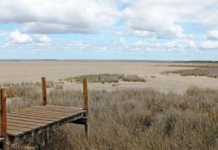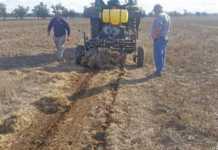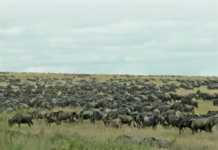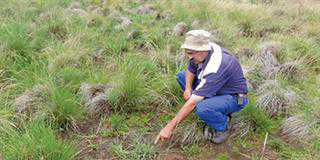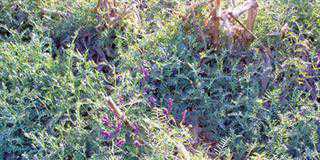Reading one particular chapter in Grasses and Pastures of South Africa some 30 years ago turned out to be a defining moment in my life. It set me on a mission to uncover legumes that could play a key role in reversing the decline in the productivity of arable soils. The 770-page compendium of our country’s grasses, by Lucy Chippindall, was first published in 1955. More than 250 pages are devoted to pasture management.
It’s in this section that the 15-page chapter appears under the title ‘The Recuperation of Soils Under Grass Pastures’. It was written by Prof JJ Theron, who taught me soil science at Pretoria University. Like most other students, I didn’t know enough to know what I needed to know. Consequently, I didn’t appreciate my professor enough – my fellow students and I referred to him as ‘Koos Kompos’.
Later on in life, I phoned him to tell him how greatly his teachings had influenced my career. Sadly, his wife informed that he had passed away a few weeks prior to my call. So I would like to dedicate this and following articles to Prof Theron for the invaluable foundation he laid in my life.
Resisting erosion
Prof Theron opens his chapter by defining the problem of declining soil productivity: “The ravages of soil erosion that have taken place, mainly during the tenure of the present generation, have brought home to us the urgent necessity of reviewing our farming methods.”
He points out that a soil’s ability to resist erosion is largely determined by its crumb structure, and that two things are primarily responsible for creating this. The second of these is one that was indelibly imprinted in my mind when I first read the chapter. And I’ve told countless farmers that biological soil fertility is all about humus, which holds soil particles together in such a way that air and water holding capacity is created.
However, I was stunned when I recently re-read what Prof Theron had to say about the first thing that builds crumb structure – I missed it many years ago simply because I didn’t fully understand it. But since coming to grips with the Albrecht system of soil mineral balancing, I was reassured I’m on the right track, because Prof Theron says calcium (found in lime, of course) is also essential for crumb structure formation.
Soil carbon
The use of grass pastures to rebuild soil humus was studied in depth and at length by Prof Theron and his team. In an early trial conducted over 10 years, the loss of soil organic matter (soil carbon) on lands that were planted to maize, teff or Rhodes grass was monitored. Of particular interest to me is that one land of maize was fertilised with 6t/ha of kraal manure every third year. Thus, in the 10-year period, this land received 18t of manure per hectare.
The results, shown in Table 1, were an eye-opener for me: applying a large quantity of manure had failed to prevent carbon loss. Prof Theron points out that a pure grass pasture can’t be expected to build humus (soil carbon) unless nitrogen is introduced as fertiliser or by adding legumes to the pasture.
In a later trial, he established that soil carbon could be built up by applying high levels of nitrogen to a grass pasture. The optimum appears to have been 1 400kg of ammonium sulphate per hectare; higher levels reduced the carbon content. In a trial in which a land was planted to Rhodes grass for four years in a 10-year rotation cycle with maize, carbon was built up during the grass phase, but not enough to offset the breakdown in the following six-year maize phase. In other words, the four-year grass phase was unable to prevent a net carbon loss in a 10-year rotation.
Flourishing
In conclusion, I must point out that Prof Theron felt that perennial legume-based pastures would be the answer to re-building soil fertility economically. However, he bemoaned the fact that “no suitable legume that will grow successfully with grass on dry land has yet been found in South Africa.” How I wish I could take my old professor to various sites around the country and show him rainfed legumes that are flourishing in a mix with grasses – he most certainly would have been delighted.
The time has now come for farmers do what Prof Theron envisaged more than 50 years ago – and that’s to rebuild soil fertility by incorporating a legume/grass-based pasture into their cash crop farming operation.
John Fair is a leading expert on pastures. He heads up Fair’s Biofarm Assist, and can be contacted on 058 622 3585 or [email protected].

